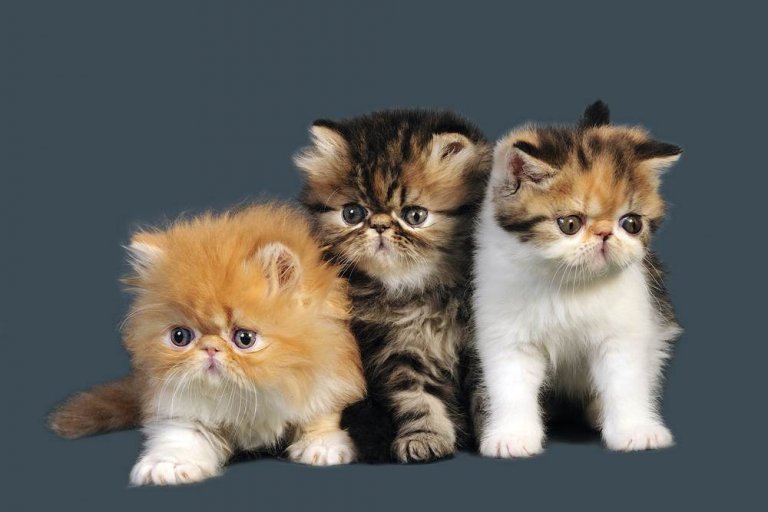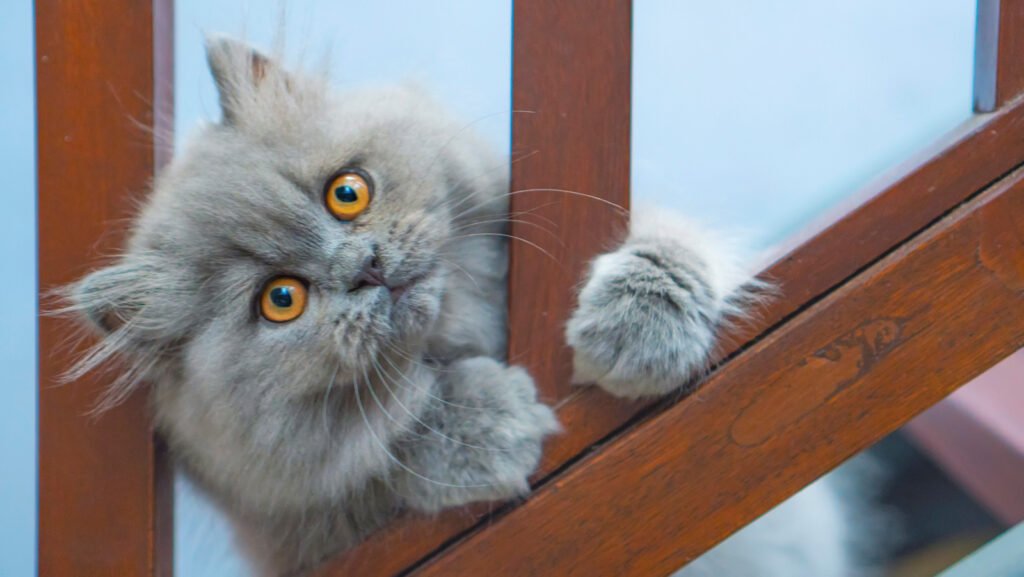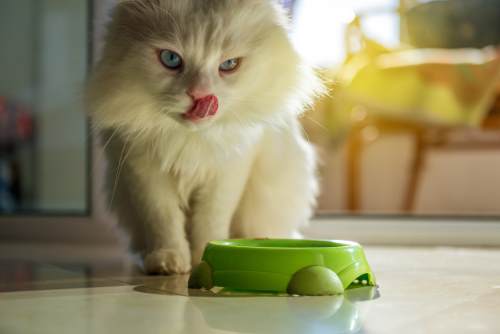Persian Cats
Persian cats are not only known for their distinctive appearance, such as their flat faces, large eyes, and luxurious fur, but also for their interesting history and genetic traits. The beauty of these cats has fascinated people for centuries, making them one of the most loved and recognized breeds around the world.
For those interested in Persian cats, whether they are thinking about adding a cat to the family, already enjoy the company of Persian cats, or are just curious about this ancient and famous breed, here are 14 fascinating facts and pictures about Persian cats. They show their magic. And beauty.
Mysterious Origin Story Of Persian Cats
Although their history dates back to the 17th century, the true story of Persian cats is a bit mysterious. Although many believe they originated in Mesopotamia, later known as Persia (now Iran), recent genetic research suggests a possible relationship with cats in Western Europe.
One theory suggests that the Italian nobleman Pietro della Valle introduced it to Europe after encountering Persians during a trip to Persia. Alternatively, sailors, traders, or other travelers may have brought these magnificent cats to the Western world. Here they quickly gained fame and became the most beloved cat breed all over the world.
Types of Persian cats
When picturing Persian cats, what usually comes to mind is the image of the classic Persian cat with long hair, white fur, striking blue eyes, lying on a pink silk pillow. But aside from their appearance in cat food commercials, Persians come in a variety of colors and patterns. In addition to the familiar white or silver coat, these charming cats can also sport shades of grey, orange, black, tri-color and even calico patterns. Persian cats also have various markings that enhance their beauty and appeal, such as tortoiseshell, calico, and tuxedo markings.
Flat Face
Persians did not develop their distinctive flat face until a genetic mutation occurred in some red tabby Persians in the 1950s. This mutation causes kittens to be born with flat mouths, a trait that many Persian cat breeders find attractive. Later breeders selectively bred other Persians to retain these traits, making them popular within the breed. According to the Cat Fanciers Association, the extremely flat face or “Pekian face” did not become a recognized standard in the breed until the 1980s.
However, due to potential health risks associated with extreme facial features such as brachycephalic syndrome in dogs, the Iranian Breed Council began advocating for changing breed standards. He encouraged the breeding of mares with less distinctive facial features. As a result, “doll-faced” Persians emerged with longer, sharper noses that more closely resembled their Persian ancestors.
Persians Have Thick, Luxurious Coats
Persian cats are recognized for their long, luxurious fur, which consists of a short undercoat and a silky topcoat. However, there is a downside to this beautiful coat. It goes to get rid of many.
If you’re thinking about adopting a Persian or already have one and you’re faced with cat hair everywhere, here are some tips: Vacuums designed to remove pet hair Invest in, keep lint balls handy in various places around your home, and brush. Teeth cat regularly. Consult your cat to remove loose hair and avoid wearing dark clothing to reduce the appearance of shedding.
Don’t Have Jumping Abilities
Persian cats are not known for their jumping abilities or agility to navigate high on furniture, unlike many other cat breeds known for their aerial acrobatics. This difference is due to their body structure, characterized by sturdy, stocky bodies that prioritize stability in aerial maneuvers. Due to their sturdy build, Persians generally prefer to stay on the ground, preferring leisurely walks and comfortable places rather than going on adventures.
Persian cat care
Persian cats are relatively low-maintenance when it comes to exercise and mental stimulation, as a few play sessions a day are sufficient for their needs. However, their fur requires careful maintenance and is not suitable for those who are not prepared to work. Neglecting proper grooming can lead to mats forming in the Persian cat’s fur, which can cause significant discomfort and pain to the cat.
Grooming
Caring for the Persian cat’s luxurious, flowing coat requires extensive grooming, making it one of the most demanding routines in the cat world. To prevent shedding, it is important to comb it daily with a wide-toothed metal comb, then gently comb the hair with a soft brush. Care must be taken when combing to ensure complete skin coverage and to prevent matting under long hair.
Regular bathing is also essential to keep the coat clean. After bathing, it is very important to dry the coat carefully using a pet hair dryer on a cool setting to avoid burning or overheating the sensitive skin. It is also recommended to wash the face daily to remove tear stains around large and round eyes. Complete a nail trimming routine every week or two, and have the ear checked and cleaned regularly as needed.
Due to the demanding nature of grooming, some Persian cat owners opt for professional grooming services. Professional groomers can reduce the size of a cat’s belly and prevent it from sticking to sensitive areas like the stomach and armpits. Another option is the tiger ornament, in which the body is shortened, leaving thin hair on the head, legs and tail.
Exercise
Persian cats are generally calm and enjoy playing with cuddly sticks or chew toys. Participating in play sessions several times a day can provide them with physical activity and mental stimulation.
Scratching is a natural behavior for cats and serves as a physical outlet. Encourage appropriate scratching by providing designated scratching areas in your home. Use both vertical scratching posts, such as long poles or cat trees, and horizontal scratching posts, such as cardboard or sisal, laid flat on the ground. This versatility allows your cat to meet its scratching needs in a variety of ways.
Appearance
The Persian cat is medium to large in size, characterized by a compact body, short, muscular legs, a deep chest, and a short back. Distinctive features include a flat face with plump cheeks, large round eyes, a small upturned nose and mouth, round cheeks, a strong chin, medium-sized ears, and large round eyes that give it a charming expression.
One of the most distinctive features of the Persian cat is its unusually long fur, complemented by a thick undercoat that adds volume. The breed is available in a wide range of colors and patterns that reflect the diversity of the Persian cat population.
Diet and Nutrition
Because of their robust build, Persian cats are more prone to being overweight. Lean body mass is vital to overall health and can help prevent obesity-related conditions such as diabetes and heart disease.
To regulate your cat’s food intake, offer measured meals twice a day (called free feeding) rather than constantly leaving out food. Kittens may need three meals a day. If you’re unsure of the appropriate diet or portion size for your Persian dog, seek guidance from your veterinarian or breeder for personalized advice.
Breed Overview
Persian cats feel completely satisfied in the comfort of home. He displays a mixture of tender affection and quiet independence. Although Persians are not overly demanding or aloof, they strike a balance between quiet companionship and quiet independence. They usually have a peaceful demeanor but have a sweet, melodious voice when they choose to vocalize. Iranians love to hug and lie close to you, and will often greet you warmly at the door when you return.
Persian Cats Favorite Food
The nutritional needs of Persian cats are similar to other domestic cats, but their specific nutritional needs may vary depending on factors such as age, activity level and health status. Here are some general guidelines for what Persian cats typically eat:
High-quality cat food: Choose a high-quality cat food designed specifically for adult cats or kittens, depending on the age of your Persian cat. Look for products labeled as complete and balanced to ensure they get all the necessary nutrients.
Protein: Cats, including Persians, need a diet rich in animal protein. Look for cat foods that contain ingredients such as chicken, turkey, fish or lamb listed as main sources of protein.
Healthy Fats: Fats are an important part of a cat’s diet and contribute to skin and coat health. Look for cat foods that contain omega-3 and omega-6 fatty acids, which are often found in ingredients such as fish oil or chicken oil.
Limited Carbohydrates: Although cats need some carbohydrates for energy, their diet should consist primarily of protein and fat. Choose cat foods that have a limited amount of carbohydrates, such as grains such as rice or corn, or grain-free foods if you prefer.
Wet and Dry Food: Both wet and dry cat food can be good for Persians. Wet foods can help moisturize teeth, while dry foods can support dental health by reducing plaque and tartar build-up. Some owners choose to offer a variety of wet and dry foods.
Water: Always provide your Persian cat with clean, fresh water. Hydration is important to their overall health and well-being.
It is important to consult your veterinarian to determine the best feeding plan for your Persian cat based on his individual needs and health characteristics. They can also provide guidance on portion sizes and eating patterns to help your partner maintain a healthy weight and lifestyle.







